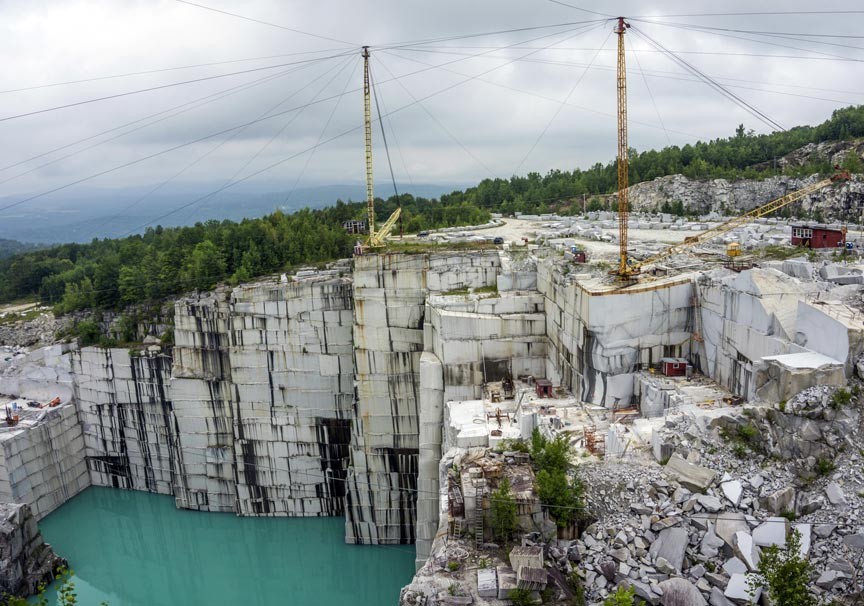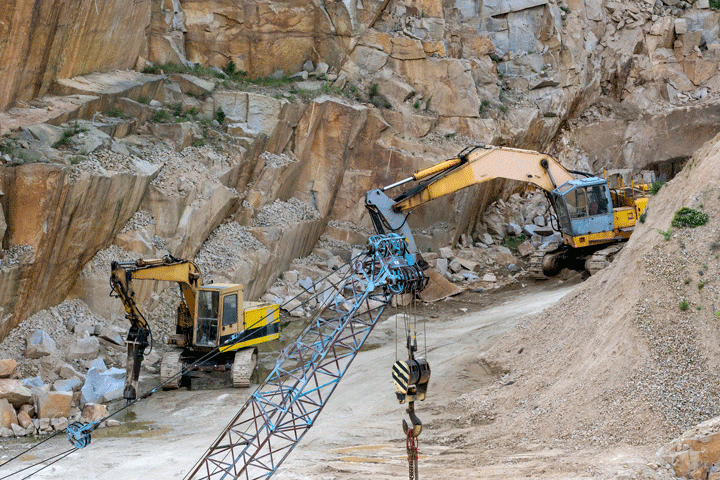Unearthing the Rich Background and Sustainable Practices of Granite Quarrying
As we depend on the precipice of uncovering the intricate tapestry of granite quarrying, a trip through time discloses not just the physical act of removing stone but likewise the cultural and historical relevance woven into the extremely fabric of this method. From the old origins that laid the structure for modern-day quarrying methods to the lasting methods that are forming the future of this sector, each sculpt mark on granite surface areas narrates waiting to be discovered (granite quarries in south africa). The tradition of granite quarrying extends far beyond simple removal; it is a testimony to human resourcefulness, resilience, and the enduring appeal of this majestic rock
Ancient Origins of Granite Quarrying
Dating back to old worlds, the technique of quarrying granite has been an integral component of human history and building advancement. The earliest evidence of granite quarrying go back to ancient Egypt, where enormous pyramids and detailed sculptures were crafted from this long lasting rock. The Egyptians utilized primitive tools to extract granite blocks from quarries, showcasing the value of this product in their monumental buildings.
Moving on in background, the Greeks also made substantial payments to the quarrying of granite. The Greeks utilized granite in different architectural marvels, such as temples and statuaries, showing their skill in shaping and sculpting this durable rock. The Romans additionally improved the techniques of quarrying granite, utilizing sophisticated devices like chisels and hammers to essence and form granite for their famous structures.
Through the centuries, the practice of quarrying granite has evolved, with modern technologies boosting efficiency while maintaining the classic appeal of this natural rock - granite quarries in south africa. From old people to contemporary contractors, the tradition of granite quarrying remains to form our globe
Advancement of Quarrying Techniques
The advancement of quarrying techniques has actually been marked by a continual progression in the direction of greater effectiveness and accuracy in drawing out granite. Early quarrying strategies involved hands-on labor with basic tools such as knives, hammers, and wedges to extract granite blocks from the earth.
Advancements in computer-controlled tools and 3D modeling have enhanced quarrying procedures, leading to marginal ecological effect and enhanced sustainability methods. As the demand for granite continues to increase, the development of quarrying techniques remains essential to meeting industry requires successfully and sustainably.
Social Relevance of Granite
Granite holds a profound social importance throughout different civilizations due to its long-lasting presence in building masterpieces and prized monuments. The social importance of granite expands beyond its physical attributes; it symbolizes resilience, stability, and eternity, making it a sign of sustaining traditions and practices.

Sustainable Practices in Quarrying
Amidst the abundant history of granite quarrying and its cultural value exists a growing focus on sustainable practices within the sector. As ecological awareness and problems regarding resource deficiency have enhanced internationally, the quarrying market has significantly accepted lasting techniques to minimize its influence on the atmosphere and bordering areas.

Moreover, improvement and rehab of quarry sites post-extraction are essential to sustainable practices. By restoring quarried areas to an all-natural or beneficial state, such as developing wild animals environments or leisure areas, quarriers can offset the environmental impact of their procedures and contribute positively to the local ecological community.
Heritage of Granite Quarrying
With a historic background soaked in craftsmanship and industrial progression, what sustaining effect has granite quarrying left on the landscape of modern culture? The heritage of granite quarrying transcends mere removal methods; it has formed building marvels, city landscapes, and social heritage worldwide. The resilient nature of granite has made it a recommended option for monuments, structures, and facilities, standing as a testimony to the ability and artistry of quarry employees across generations.
Moreover, the financial footprint of granite quarrying can not be forgotten. The market continues to give employment possibility go now and drive regional economies in areas where granite extraction prevails. It has additionally spurred technical developments in quarrying techniques and devices, leading to a lot more efficient and lasting practices.
In regards to sustainability, the heritage of granite quarrying includes efforts to minimize environmental effects with reclamation jobs and liable description resource administration. By stabilizing economic rate of interests with environmental stewardship, the market makes every effort to guarantee that future generations can remain to gain from this enduring natural deposit.
Conclusion
